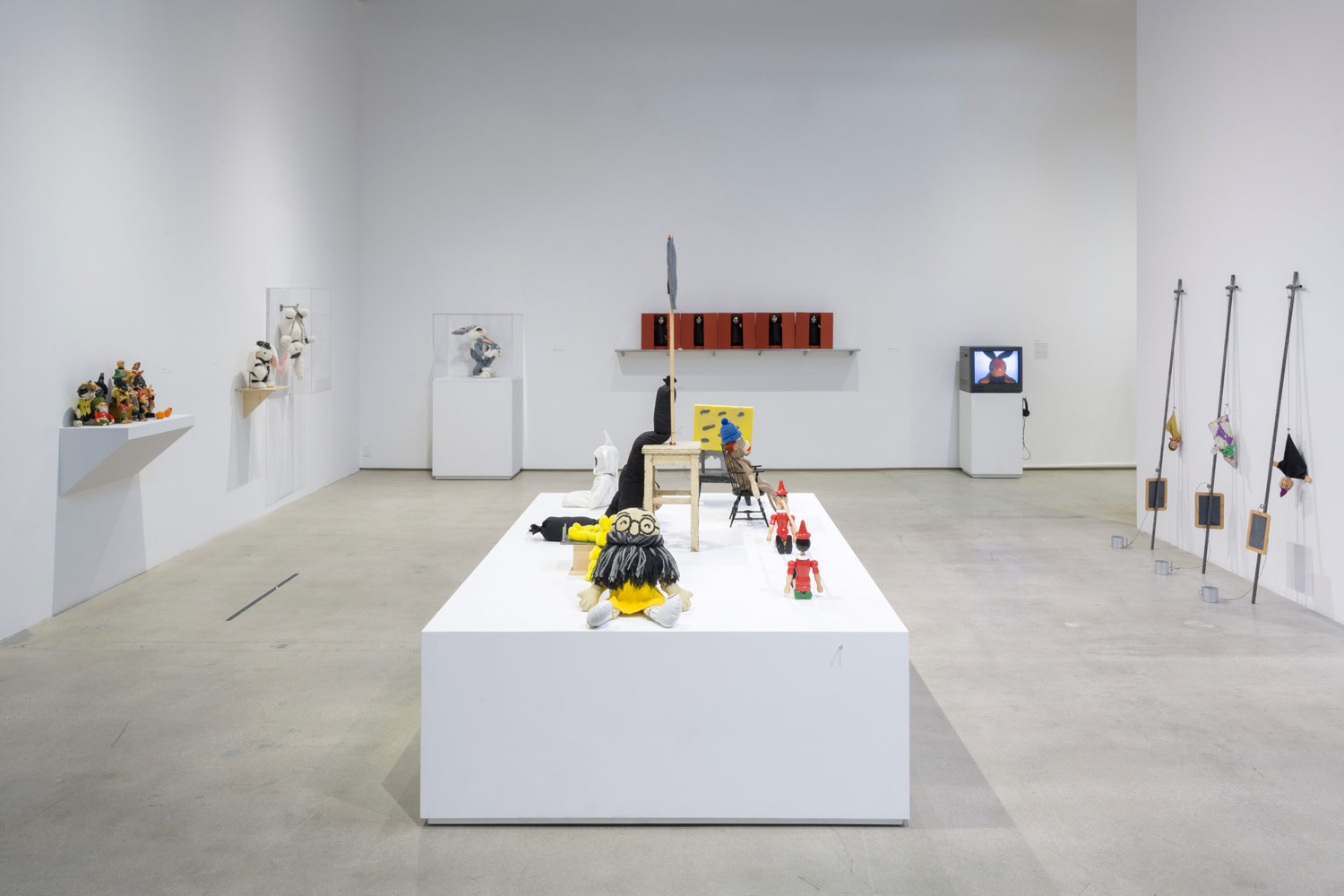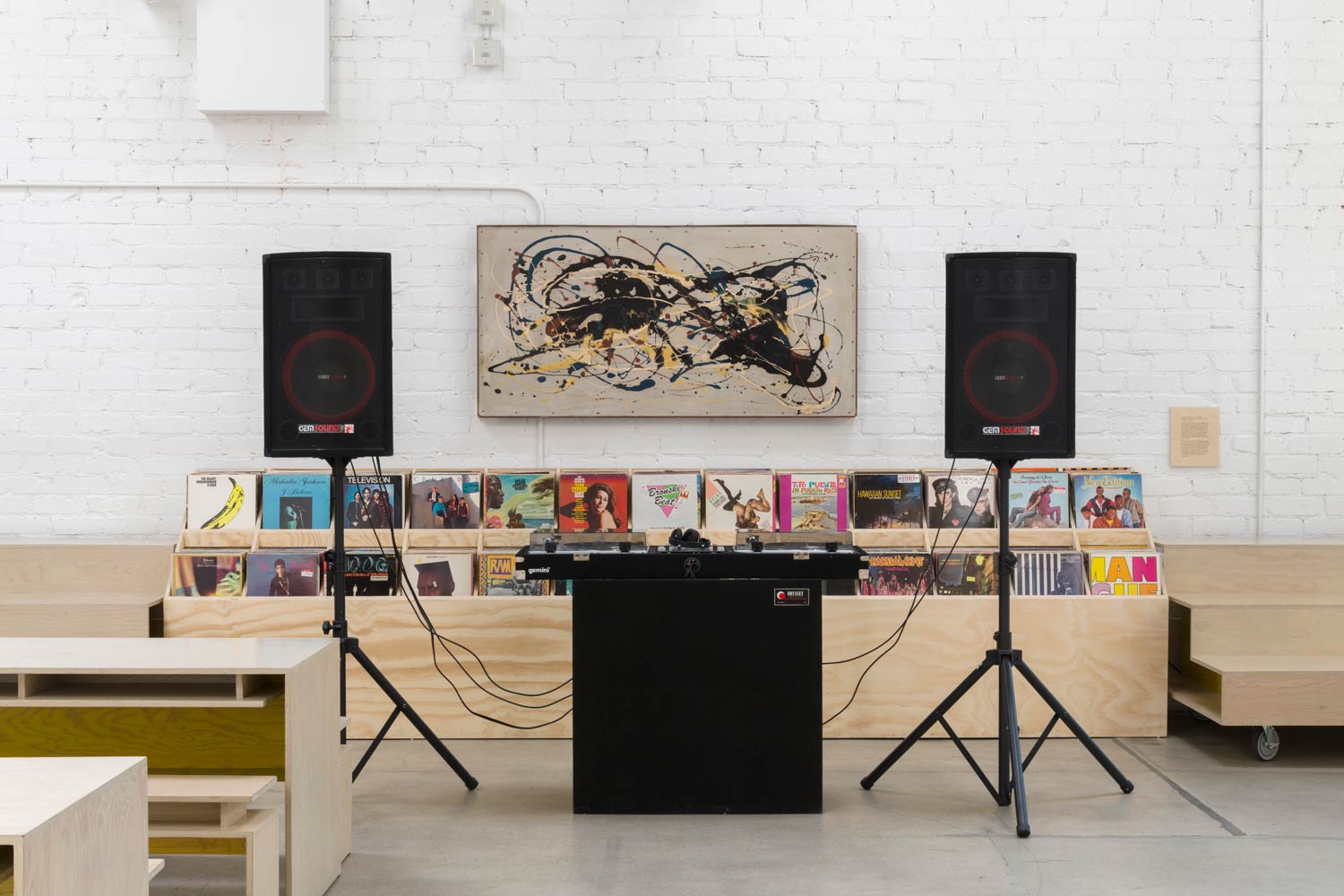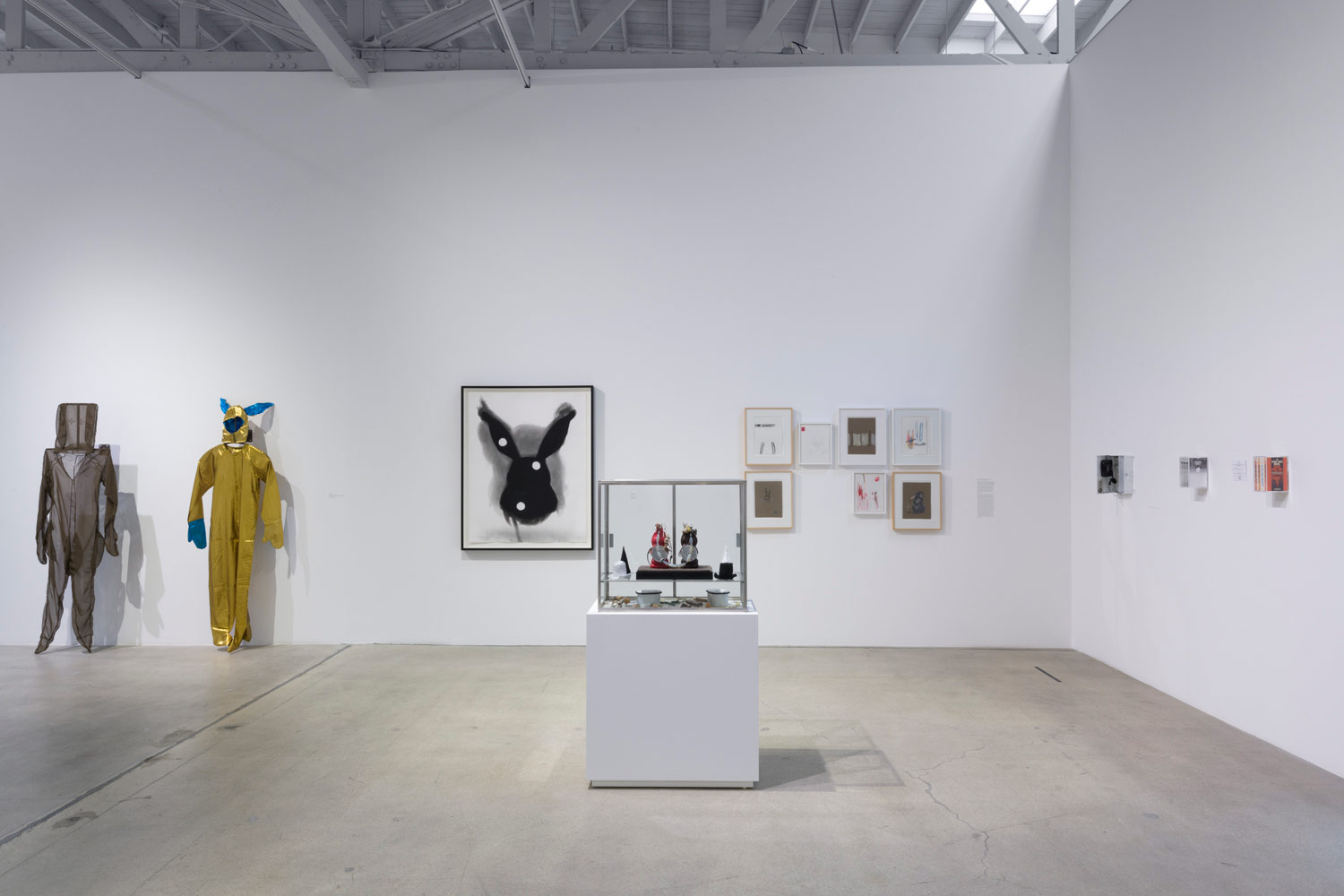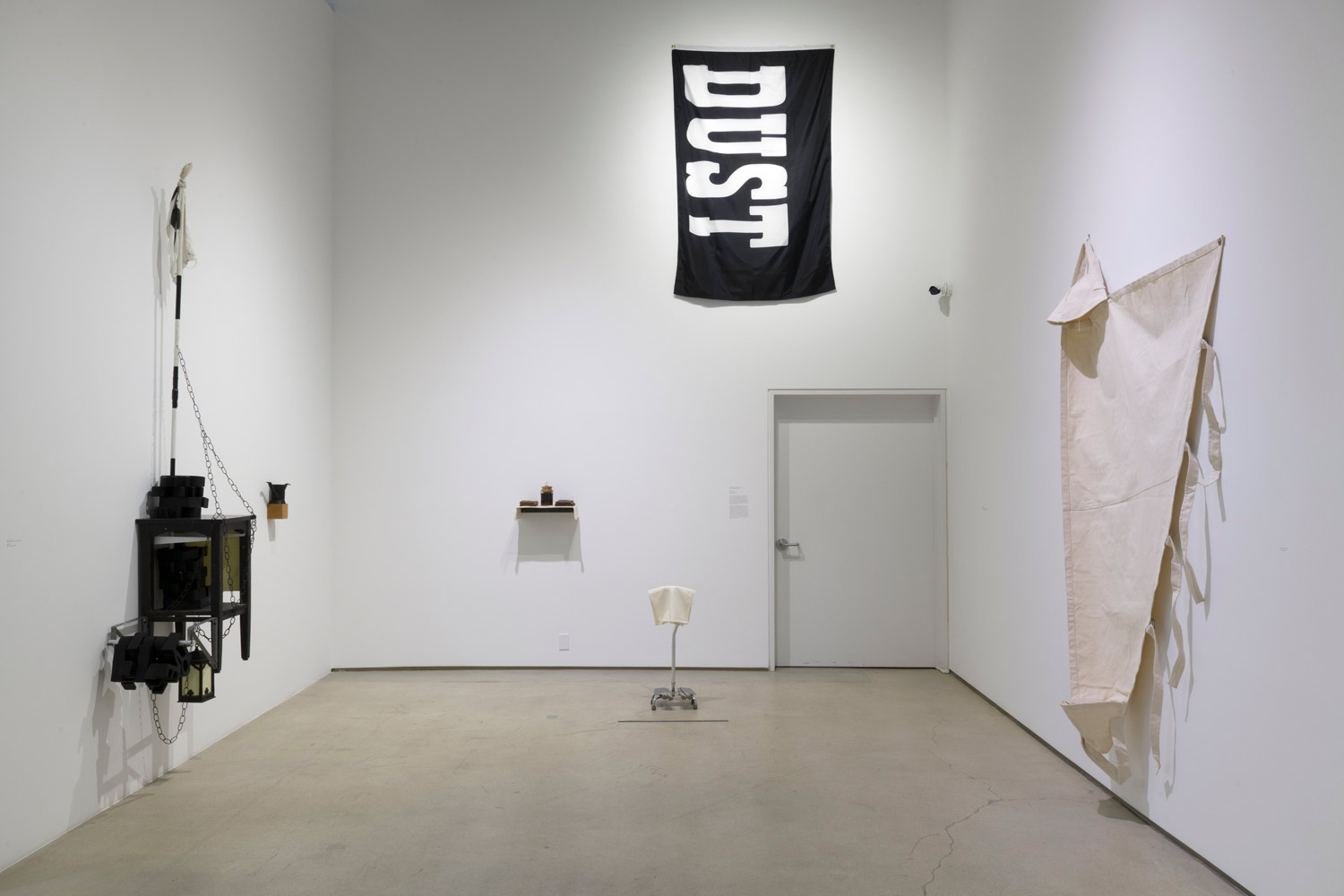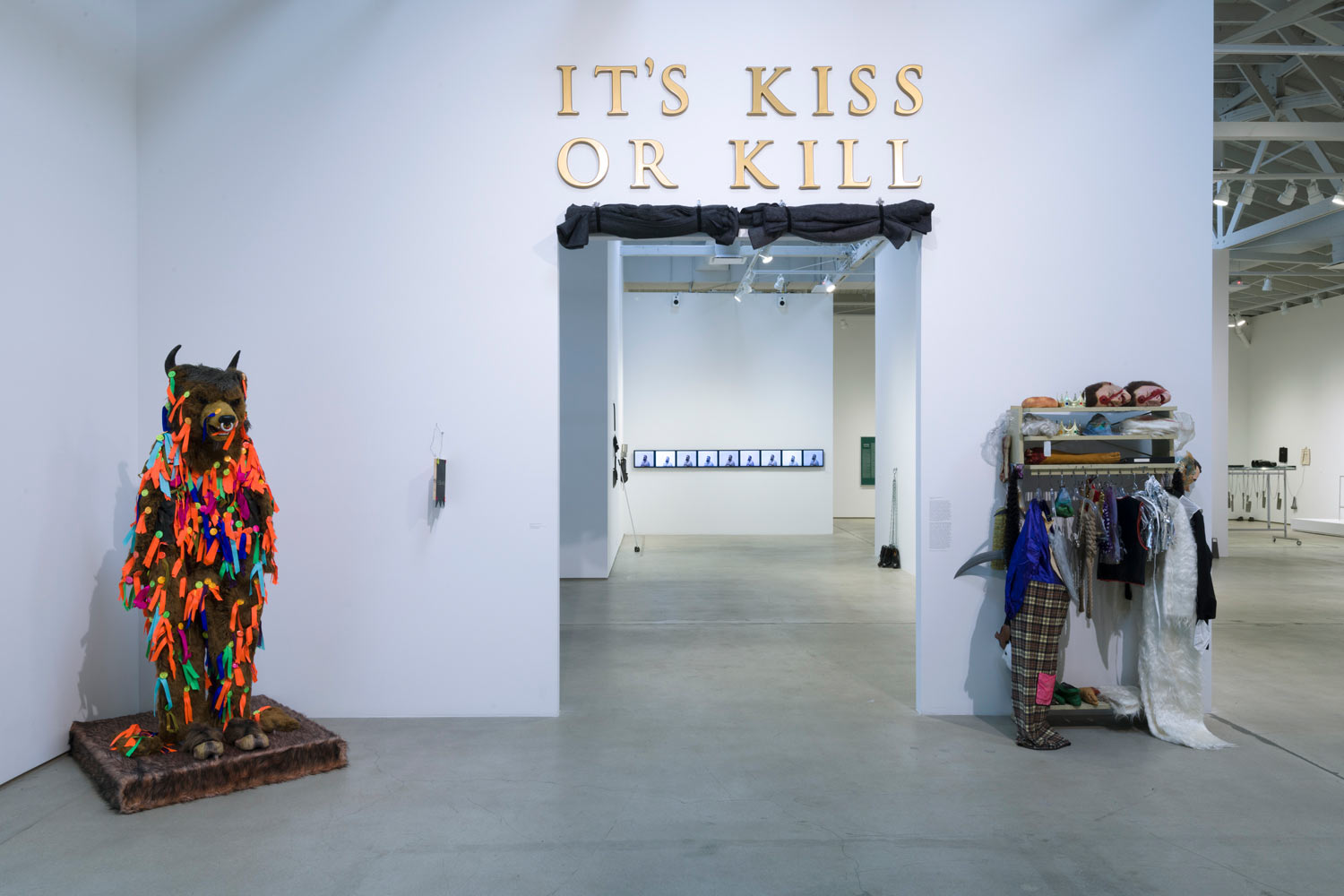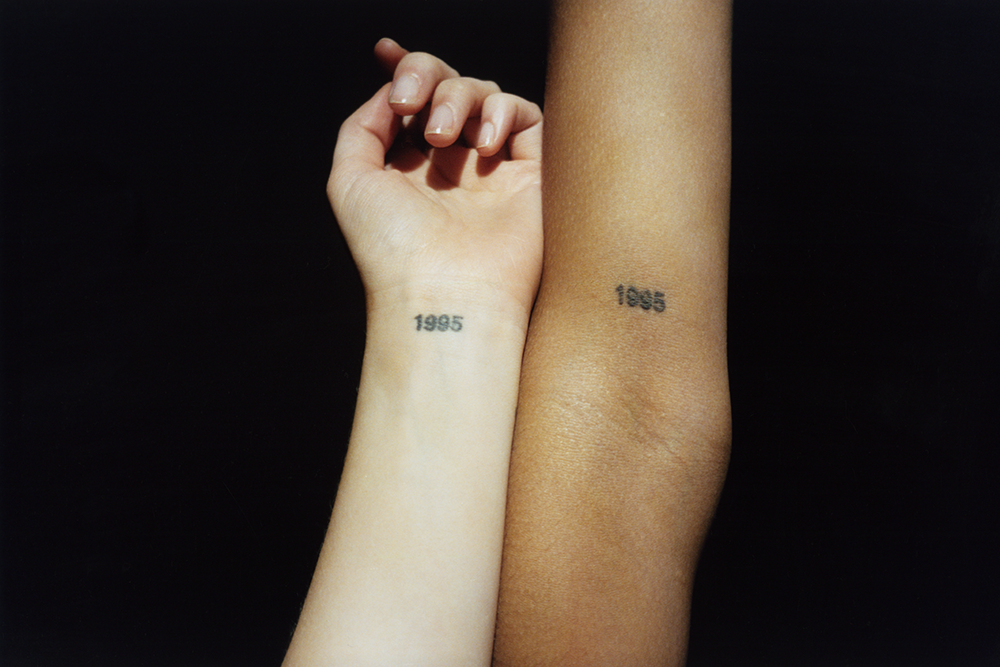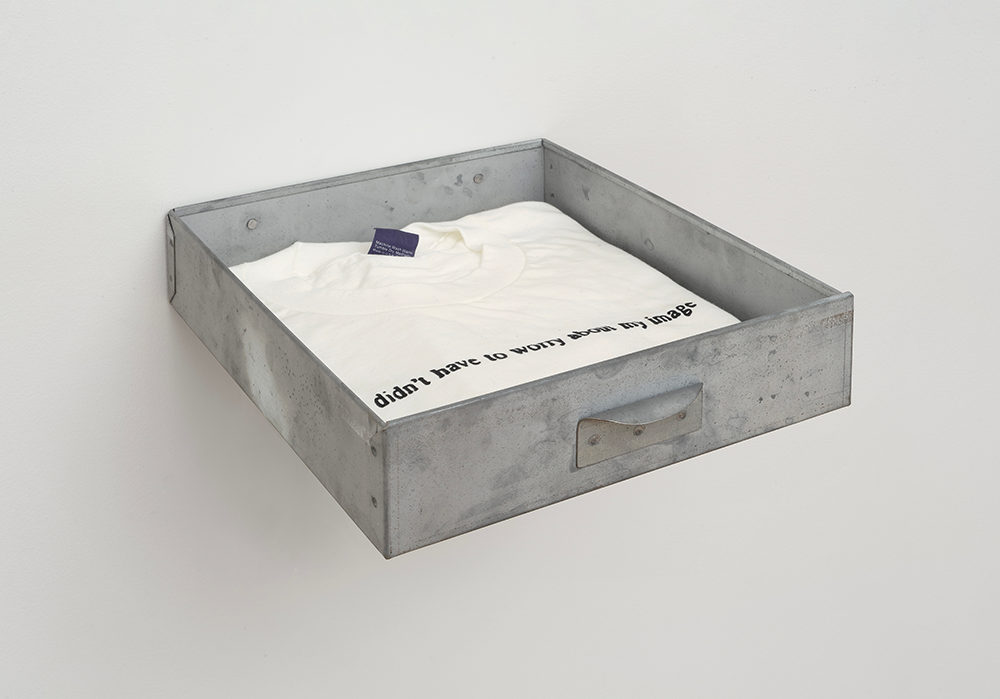Since the mid-1980s, Nayland Blake has engaged the politics and aesthetics of identity in America. Biracial, queer, and gender nonconforming, Blake (preferred pronoun: they/them) draws from these positions to confront their anxiety both with how popular culture represents identity and, in turn, how they represent identity in their own work.
One hundred and two of Blake’s works are restaged at the ICA LA in “No Wrong Holes: Thirty Years of Nayland Blake.” Throughout Blake’s career, sculpture, performance, video, and drawing have functioned as tools for interrogating traditional strategies of representation and categorization. Blake merges conceptual art motifs with a hands-on, materialist approach producing works that could be mistakenly seen as post-Minimalist, but instead operate with a decidedly more playful and personal sensibility.
Sleek metal structures become tableau for BDSM and kink scenes, sculptural assemblages reflect the frailty of materiality and their subject matter, and intimate videos and drawings directly introduce Blake’s subjectivity to the viewer. The survey relies heavily on works produced from the late 1980s through the 1990s, and in this period Blake deftly navigated the fraught landscape of the culture wars, the HIV/AIDS epidemic, and the rising tide of conservative politics in America. As we confront a renewed assault from similar political and social forces, Blake’s work generously offers examples of how modes of protest can be located in an aesthetic and material practice.
Meticulous in presentation, tastefully arranged, and aesthetically restrained, the exhibition might initially pass for something more conservative. However, Blake’s work suggests a subtle yet radical alternative to the traditional reconciliation between meaning and form while refusing to provide us with a comforting didactic resolution. Rather, it opens a space where we too are asked to reevaluate the complicated politics surrounding the representation of identity in contemporary popular culture, and to recognize the contradictions of living in a time when representation often takes precedence over reality.


